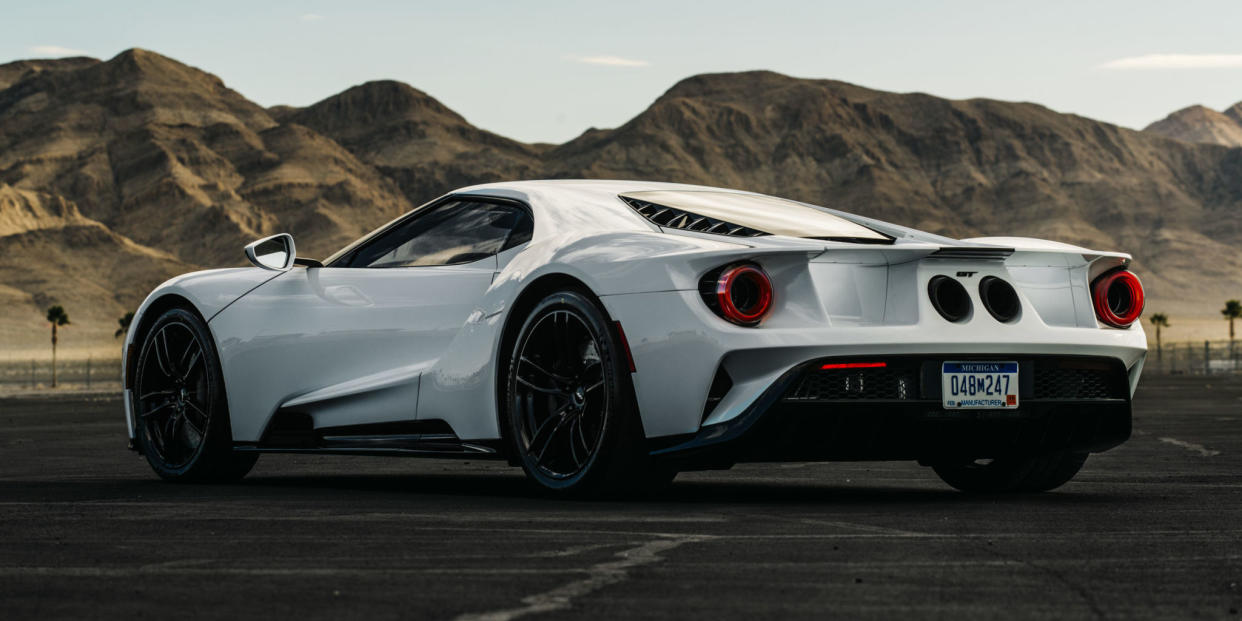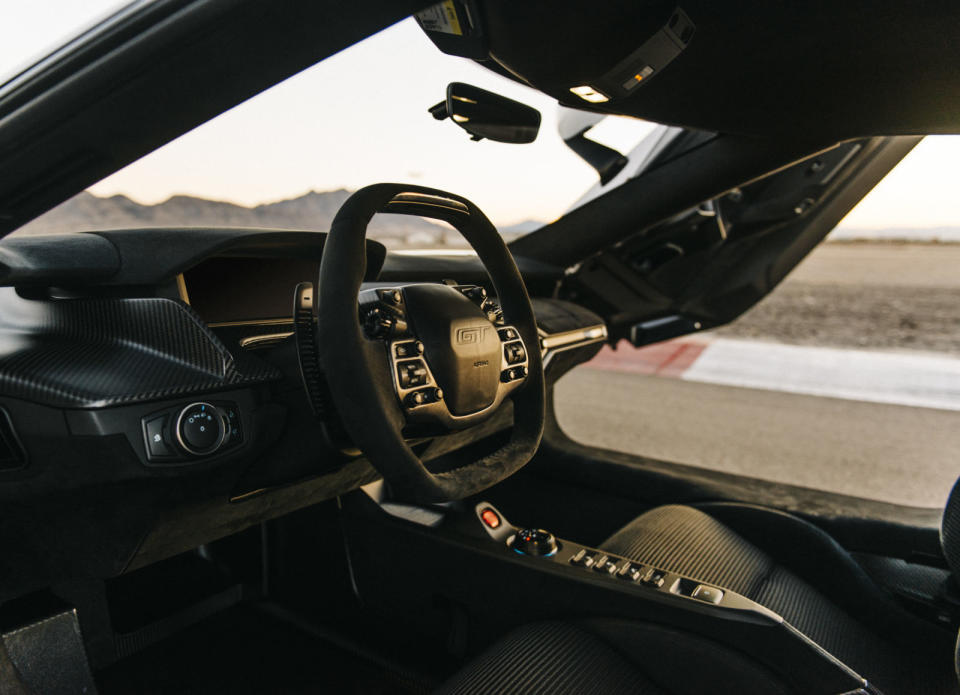What You Learn After Driving the Ford GT

The Ford GT debuted in January, 2015. That's more than two years ago. In that time, a racing version of the GT was developed and won the 2016 24 Hours of Le Mans, both substantial accomplishments for such a short period of time. But that road car we first saw? Nobody has driven it.
Until now.
R&T's Editor-in-Chief Kim Wolfkill just spent some time with the roadgoing GT at Utah's Miller Motorsports Park. Here are a few of his quick thoughts on Ford's new supercar. Look for a deeper dive into the GT soon and get our impressions of the interior, looks, and sounds in our ridealong. - Ed.
1. Tight fit. We've covered the interior before, but not from the driver's seat. It's still tight like a Lotus Elise–larger people will rub shoulders, I'm 6'2" and my hair grazes the headliner–but it's not unpleasant. Everything looks and feels like it should on a car that costs as much as a GT does. But here's a quirk: the pedals are adjustable, but it's manual, no electric motors here. You pull a fabric tab to move the pedals. But you don't care about a fabric pull to move the pedals. You care about how it drives.
2. Sound doesn't matter. Power delivery is linear in the 3.5 liter, 647-horsepower twin-turbo V6 with a clean pull from around 3000 rpm all the way to redline. But the exhaust note doesn't significantly change as it runs up the tach, not even when it delivers a slight boost in power from 5000 rpm onward. And the V6 isn't an exotic sounding powerplant to begin with, so you have to be excited about the racing pedigree behind the engine. But Turbo lag is pretty much non-existent, part of that is because it has anti-lag (Anti-lag. In a road car.) that keeps the turbo spooled to 20,000 rpm in Sport and Track mode.

3. The 7-speed dual-clutch Getrag transmission is outstanding. Upshifts are lightning fast, the downshift blips perfectly and the gearing appropriate for everything from in-town driving to track days. 7th gear feels a bit like an overdrive in normal conditions, but clearly serves a higher purpose when helping propel the GT to its 216 mph top speed.
4. The experience and looks are mismatched in the best way possible. The GT looks really high tech (and it is), but it doesn't act like it's some sort of wundercar that c. It's refreshing to drive something this fast and this capable that relies less on digital wizardry and more on good old-fashioned race car engineering.
5. Hydraulic steering. The GT has hydraulic steering, a dying technology that is still better than electric steering. As you'd hope, it does an excellent job of reminding the driver what the road is doing and how the car is responding to the road. The wheel moves around in your hands on uneven surfaces, but not nervously, it's communicative.

6. A moron can drive it, but the GT won't flatter you. Excellent mechanical grip and genuine levels of downforce make the GT nearly unflappable on public roads. Its limits are so high that only severely bad driving can unsettle it. At the track, the GT behaves the way any good race car should, race car being the key word there. It's forgiving to a point, but also expects you to know what you're doing. It responds naturally to inputs, but works best when those inputs are smooth, measured and flow from one to the next.
7. You have to drive it like you mean it. The chassis generates the most grip and cornering force when it's appropriately loaded, whether it be trail braking into a corner or accelerating out. It doesn't take well to hesitation or trepidation, you need to be assertive. As low as the GT is, it transitions from side to side quickly and predictably with no noticeable body roll or hesitation.
8. Braking is insane. Braking from high speeds requires you to recalibrate your brain. That's because of just how powerful the brakes are and how the downforce helps with initial braking grip. Additionally, the rear airbrake helps keep the car balanced and stable under hard braking.

9. Looking like a race car doesn't make it a bad road car. For a car that shares so much with a pure-bred race car, I was expecting the on-road manners to suffer at the expense of superior track performance. Not the case. Thanks to already good suspension tuning that can be further softened via Multimatic's adjustable spool valve shocks, the GT delivers a compliant ride that's far from punishing. Admittedly, a carbon tub, performance suspension and sticky, stiff sidewalled tires will never be luxury car smooth, but the GT certainly gives up nothing to other supercars and is noticeably less jarring than many track-focused production cars (GT2 RS, M3 GTS, ZL1 1LE, etc.).
You Might Also Like

